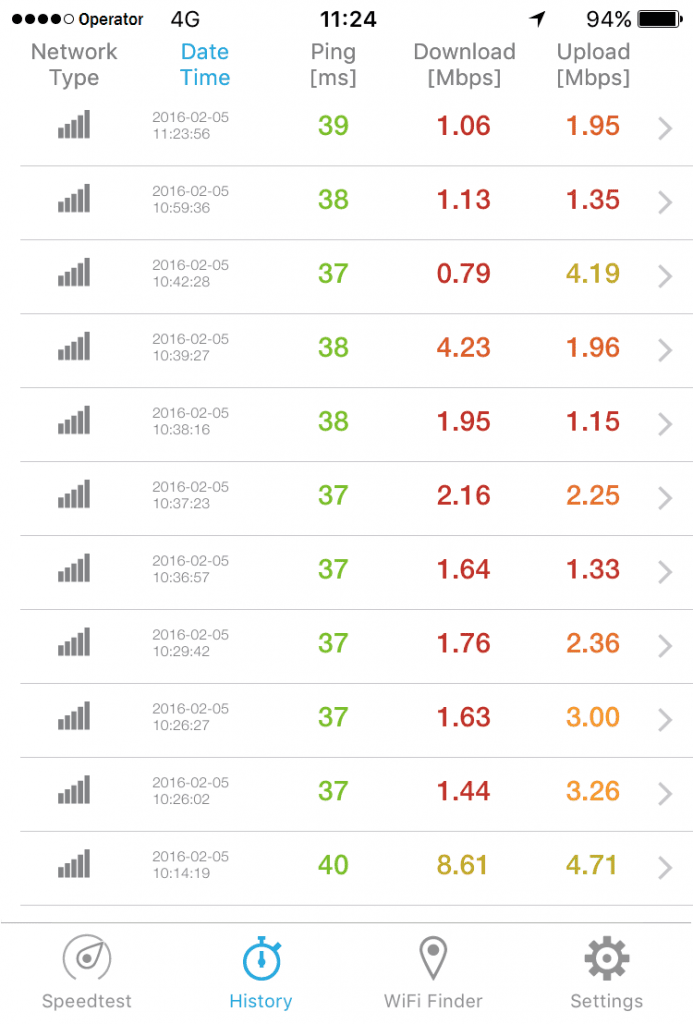UK LTE speed and coverage lags global markets - report
Comprehensive analysis of global LTE networks has revealed mobile broadband speed and coverage performance around the world, with the UK trailing far behind in both.
February 5, 2016

Comprehensive analysis of global LTE networks has revealed mobile broadband speed and coverage performance around the world, with the UK trailing far behind in both.
The research, conducted by mobile analysis firm OpenSignal, took in-depth measurements of LTE performance around the world based on data gathered from over 350,000 users globally in Q3 and Q4 2015. While Singapore is the undisputed leader in terms of coverage and South Korea for download speeds, the performance of UK operators leaves plenty to be desired.
For coverage of LTE, based on the proportion of time users are connected to an LTE network, the UK ranked a lowly 55th out of 69 territories; while average LTE speed came in at 15Mbps, 29th overall.
Hungary, Romania, Denmark and the Netherlands set the pace across the rest of Europe, with average speeds ranging from 23 to 28Mbps. The Dutch lead the way in terms of LTE coverage for European countries, with 84%.
In the UK, EE serves up the most pervasive LTE coverage, at 60%, while Three trails the pack with just 40%. For Three, however, it now operates the joint-fastest network in the UK alongside EE with download speeds of 18Mbps in Q4 2015. This is a particularly impressive feat considering its speeds have grown considerably since Q3’s performance of 11Mbps.
OpenSignal suggests the speed increase of LTE networks globally stems from advances in LTE technologies, such as carrier aggregation, as well as new network rollouts which aren’t yet overburdened by a dense subscriber base.
“A year ago, an average 4G speed of 20 Mbps would have been a truly impressive feat, but today there are 15 countries and 52 individual networks that meet or exceed that mark,” it said. “This inflation of speed is really two distinct trends. On the one hand established LTE countries like Singapore, South Korea, Denmark, Hungary and Australia are plowing more resources into their networks. They’re adding capacity by deploying LTE on new frequency bands, and bonding those disparate bands together with new LTE-Advanced technologies. The result is not just greater capacity – allowing more users to tap consistently fast connections – but a big increase in peak speeds as users get access to more of a network’s overall bandwidth.
“The second trend is what we like to refer to as the ‘new network effect’. New networks tend to be light on subscribers, but as operators sign up more 4G customers, speeds slow down as more devices compete for LTE resources.”
Perhaps the second trend highlighted by OpenSignal explains some of the less than impressive speeds this Telecoms.com writer observed on his inner-city London LTE network (below).

Elsewhere, the US came in a disappointing 55th place for average LTE speeds, despite its top 10 ranking for coverage (81%). Its average download speed of just 10Mbps belies the country’s impressive early adoption rate when T-Mobile US first launched 4G in 2010.
Speaking of T-Mobile, it’s not hard to imagine CEO John Legere readying his next speech spouting off about the carrier’s latest win. T-Mo US just about pipped Verizon to top-spot when it comes to network speeds, reaching over 12Mbps compared to Verizon’s little-bit-over 12Mbps. If his next vlog or live twitter video stream is anything like some of the gems in the video below, it’ll be another entertaining entry into his growing repertoire of hits.
The OpenSignal findings from its analysis is a comprehensive and highly informative report, covering more elements of LTE network performance such as LTE vs wifi and an interactive world map showing LTE network rollout by territory and the significant dates thereof.
See the full report here.
About the Author
You May Also Like












_1.jpg?width=300&auto=webp&quality=80&disable=upscale)
